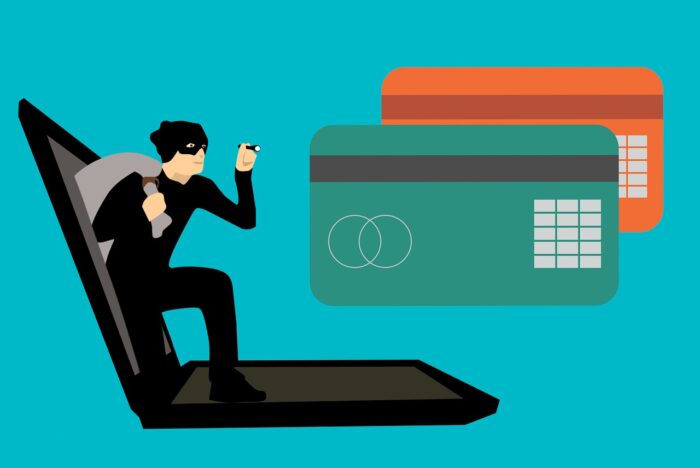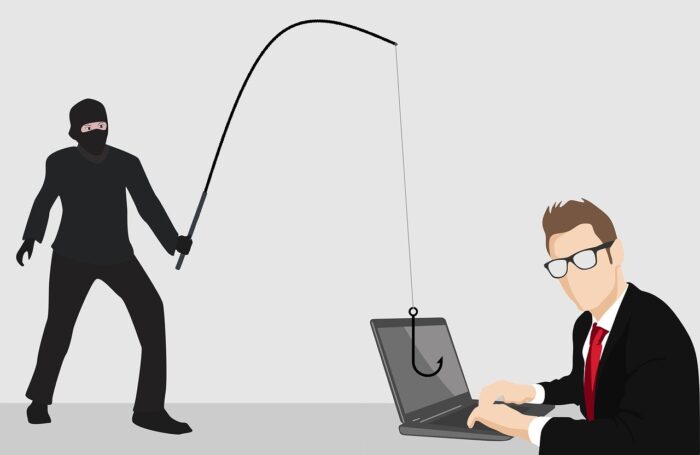Internet fraud costs small business owners increasing amounts each year. Global cybercrime figures suggest $6 trillion USD was lost in 2021. Moreover, forecasts predict an increase to $10.5 trillion USD by 2025. One of the most effective and concerning areas of online fraud is the use of phishing scams, since they have a very low barrier of entry for fraudsters with a huge potential reward.
Phishing scams involve deceptive messages delivered to victims with the intention of obtaining sensitive information or installing malware onto the target machine. They commonly take the form of a seemingly official communique from a bank that scares the recipient into action — that their details have been compromised, for example.
Unlike confidence scams, there is no rapport established with the target or two-way communication of any means with phishing scams. Hence, phishing scammers can cast their nets wide. At their most rudimentary, it is only a matter of obtaining as many email addresses or phone numbers as possible. These are then traded freely on the dark web.
Any sized company can be the target of a phishing scam, so it is important for all business owners to have a protocol in place to mitigate the risks of attacks. Businesses are either the victims of mass non-specific attacks or more targeted campaigns if the hacker has identified a weakness or something of value to be exploited within the firms.
It is known as spear fishing when the scammer uses known information about the enterprise or the employees to appear more legitimate.
Employing Appropriate Technology
An effective approach to limiting your company’s vulnerability to phishing attacks is to use a suitable framework that helps block attempted phishing attacks. As modern businesses move much of their activities into the Cloud, a Secure Access Service Edge (SASE) architecture combines network and security services under one on-demand umbrella.
A VPN allows communication over the internet between two devices using a secure remote tunnel. A SASE VPN is a simpler and safer solution that an IT department can use to monitor all inbound ports, gather information, and then make relevant decisions. Cloud-based SASE is more than just a VPN. It combines any combination of DNS filtering, Firewall as a Service (FWaaS), Network Security, and Data Loss Prevention (DLP) to suit the exact needs and budget of the business.
DMARC is another protocol valuable in the fight against phishing attacks that verifies that senders of emails are who they say they are. This minimizes the hacker’s ability to send an email that appears to have been sent internally. Hence, it reduces the likelihood that someone within the company is duped into thinking it can be trusted.
These solutions, along with many more can be offered by cybersecurity specialists like Perimeter 81, enabling older companies to break free of antiquated legacy hardware and for new companies to dial in a future proof security system.

Effective Training of the Workforce
The other piece of the puzzle is to have all members of your team singing from the same song sheet. Training must be thorough, engaging, and entertaining so the information presented stays with the participants. As a result, it lessens the chances of an employee falling for a scam.
Phishing attacks can come via email, SMS, phone call, or social media channels. Therefore, all must be addressed during the sessions. A network is only as secure as its weakest link. So, it is important that all staff attend at all levels of the business. This includes senior management, contractors, and temporary staff.
The most effective training is presented in bite-sized easily comprehensible sittings of no more than twenty minutes. Moreover, it should be repeated often throughout the year — to reflect the changing face of the threats a business might face. The best training is a two-way conversation, with the option for detailed feedback to be given by those participating. In addition, offer a quiz or game at the end to test the effectiveness of the session.
Phishing has become even more a prevalent threat in the last few years. This is due to the increase in the number of home workers ― many working on under-protected or unpatched devices. Cloud-based security is especially useful. This is because it is not always possible for IT staff to physically access every machine on a company’s network.

What Might a Phishing Attack Look Like?
An attacker might send a communication with a spoofed phone number, domain, or sender identification. There is also a practice known as typosquatting, where criminals purchase similar domain names with a typo for malicious intent. When read quickly (especially among the large number of emails people often receive), the receiver might not notice the domain is incorrect.
Phishing emails will make use of official company logos and graphics. They may appear to be completely legitimate. However, the crucial difference is the links will take you through to the fraudsters’ own pages. There, they will ask you to input details. In some cases, they will automatically download malware to the device.
It is good practice to never follow links from emails and instead to search for the pages yourself. Then you can be more certain you are not being duped. If there’s ever an element of doubt, it’s advised to err on the side of caution. Make a phone call (with a number obtained from outside the message) to substantiate the veracity of the email’s content.
Final Comments
It pays to be aware of our actions online from both a personal and a corporate standpoint. The immediate damages of phishing scams can be costly. However, the ensuing effects on companies’ reputations are harder to put values on.
Find a Home-Based Business to Start-Up >>> Hundreds of Business Listings.

















































